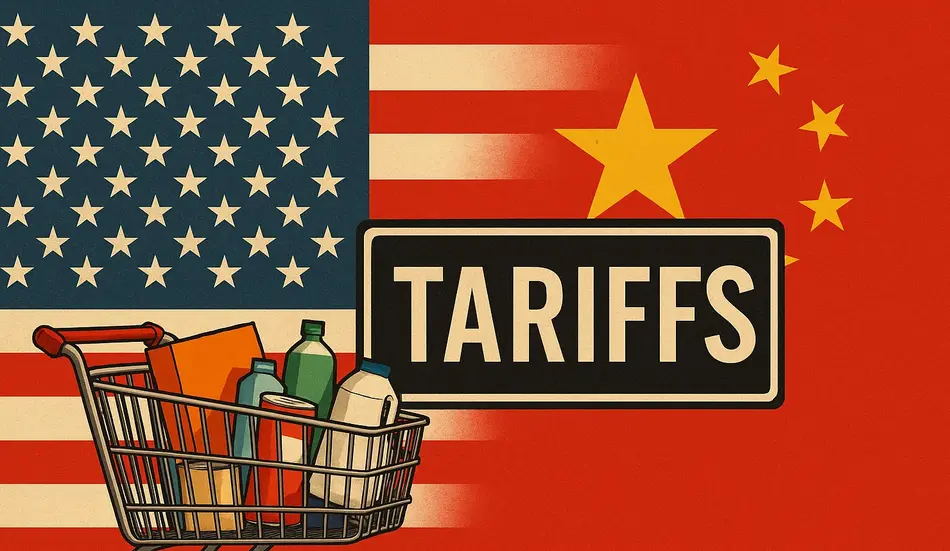Introduction
Trump tariffs took full effect on Day 200 of Donald Trump’s second administration, marking the complete enforcement of his tariff regime—a policy he claims will funnel “billions of dollars” into the United States. Trump has celebrated the new duties as a financial victory, boasting that money is “flowing into the U.S. from countries that have taken advantage of us for many years.”
But beyond the rhetoric, a different economic truth emerges: Trump tariffs are not checks written by foreign governments. They are taxes levied on U.S. importers at the port of entry—costs that ultimately flow through to American businesses and consumers.
Table of Contents
How Tariffs Work in Practice
At their core, tariffs are import taxes. When a shipment arrives at a U.S. port, the importer—the American company bringing in the goods—pays the tariff directly to U.S. Customs and Border Protection.
The foreign exporter may choose to adjust prices to remain competitive, but the legal responsibility falls squarely on the importer. From there, U.S. firms make a choice: absorb the extra cost and reduce profit margins, or pass it on to consumers through higher prices.
Economists stress that tariffs function no differently than sales taxes, except they are collected at the border rather than at the register.
The $600 Billion Question
Commerce Secretary Howard Lutnick suggested the administration could take in $50 billion a month from tariffs, which translates to $600 billion a year. While this sounds like a windfall for the Treasury, it raises troubling economic implications.
If tariffs are bringing in that much money, then that same amount is being pulled out of the economy—paid by companies and consumers who face higher costs. The scale is striking: $600 billion exceeds the gains many households received from Trump’s celebrated tax cuts. In effect, one policy is canceling out the other.
Hire Smarter in a High-Cost Economy
Post your job on WhatJobs and secure top talent—stay competitive even as tariffs raise costs across industries.
Post a Job Now →Corporate America Feels the Squeeze
Large multinational companies are already sounding alarms:
- Nike estimated that tariffs would cost the company an additional $1 billion annually.
- Adidas projected a hit of $230 million.
- Walmart, America’s largest retailer, warned customers to “get ready for higher prices” on everything from clothing to electronics.
These announcements highlight the direct consequences: higher consumer prices, reduced corporate margins, and slower economic growth.
Consumers on the Front Line
Ordinary Americans are not shielded from tariffs. Whether they shop for school supplies, sneakers, or groceries, they see rising prices. Low- and middle-income households feel the pinch most acutely, as everyday goods consume a higher share of their budgets.
Analysts warn that tariffs, marketed as economic protection, risk becoming a hidden tax that erodes household purchasing power.
Political Messaging vs. Economic Reality
Trump continues to frame tariffs as money “coming from other countries.” The simplicity of the message makes it politically powerful. But experts—including members of his own administration—acknowledge that the payments are made domestically.
Treasury Secretary Scott Bessent, pressed on the issue in a televised interview, admitted that the “check is written at the dock by the importer.” His attempt to soften the impact only underscored the point: American firms pay first, and consumers ultimately pay last.
Historical Context
Tariffs are not new to the United States. From the Smoot-Hawley Tariff Act of 1930, which deepened the Great Depression, to Trump’s first-term trade wars with China, tariffs have a long history of triggering retaliatory measures and higher costs.
Supporters argue that Trump’s tariffs could restore domestic manufacturing by discouraging reliance on imports. Critics counter that global supply chains are too entrenched for tariffs alone to bring jobs back home—and that the short-term harm outweighs any potential long-term gain.
Winners and Losers
- Potential Winners: Some domestic industries may benefit from reduced foreign competition, particularly in steel, aluminum, and certain agricultural products.
- Clear Losers: Import-heavy sectors such as retail, technology, and automotive face steep new costs. Consumers, who buy their goods, are caught in the crossfire.
Farmers also remain wary. In Trump’s first term, retaliatory tariffs from China hit U.S. soybeans and pork, requiring billions in federal bailout funds to stabilize rural economies. The possibility of another cycle looms large.
Economic Contradictions
Trump’s tariffs create a paradox: the administration claims to reduce taxes while simultaneously imposing massive new ones at the border. Analysts argue that tariffs are less transparent than direct taxation, making them politically easier to sell but economically harder to sustain.
If revenues truly reach $600 billion annually, the net effect could be contractionary, pulling money out of circulation just as the administration seeks to spur growth.
Global Implications
Tariff policies also have diplomatic costs. Allies and rivals alike may retaliate with tariffs of their own, reducing demand for U.S. exports and undermining trade relationships. The U.S. risks alienating partners at a time when global cooperation on supply chains, energy, and security is crucial.
FAQ: Trump Tariffs Explained
Q1: Do foreign exporters pay tariffs?
No. U.S. importers pay them when goods enter the country.
Q2: Why does Trump say money is “flowing in”?
Because the Treasury collects the revenue. However, it comes from American businesses and consumers.
Q3: How do tariffs affect consumers?
They lead to higher prices on goods like clothing, electronics, and groceries, especially for middle- and low-income households.
Q4: Could tariffs revive U.S. manufacturing?
Possibly, but only in select industries. Most experts argue the benefits are outweighed by widespread costs and supply-chain disruption.
Conclusion
Trump’s tariff regime represents both a bold political gambit and a risky economic experiment. While the White House frames tariffs as a way to reclaim lost wealth from foreign nations, the burden is being shouldered by American companies and families.
As prices rise and corporate profits shrink, the real test will be whether voters see tariffs as protection—or as punishment disguised as policy.




